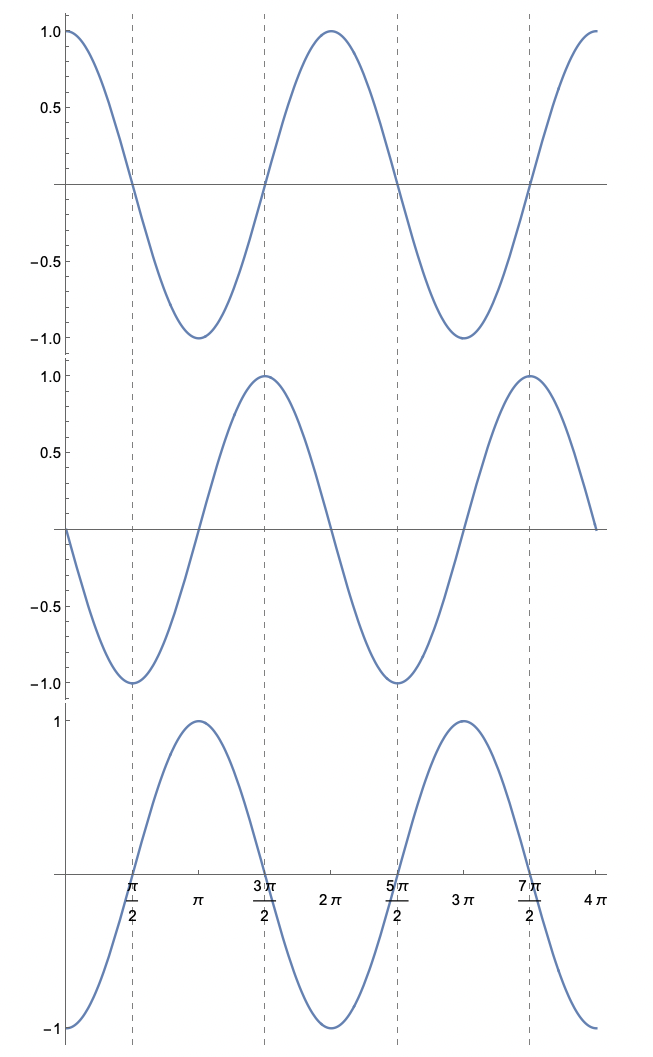Hi Mitch—are you trying to stack the 3 plots and put a vertical dashed line (or lines, in your case) that goes through all three of these plots, uninterrupted? I just want to check before I think of a possible solution. Here's what I have in mind currently:
GraphicsColumn[
{Plot[Cos[x], {x, 0, 4 \[Pi]}, Ticks -> {None, Automatic},
GridLines -> {Range[\[Pi]/2, 9 \[Pi]/2, \[Pi]], None},
GridLinesStyle -> Directive[Gray, Dashed]],
Plot[-Sin[x], {x, 0, 4 \[Pi]}, Ticks -> {None, Automatic},
GridLines -> {Range[\[Pi]/2, 9 \[Pi]/2, \[Pi]], None},
GridLinesStyle -> Directive[Gray, Dashed]],
Plot[-Cos[x], {x, 0, 4 \[Pi]},
Ticks -> {Range[0, 4 \[Pi], \[Pi]/2], {-1, 1}},
GridLines -> {Range[\[Pi]/2, 9 \[Pi]/2, \[Pi]], None},
GridLinesStyle -> Directive[Gray, Dashed]]}, Spacings -> 0]
